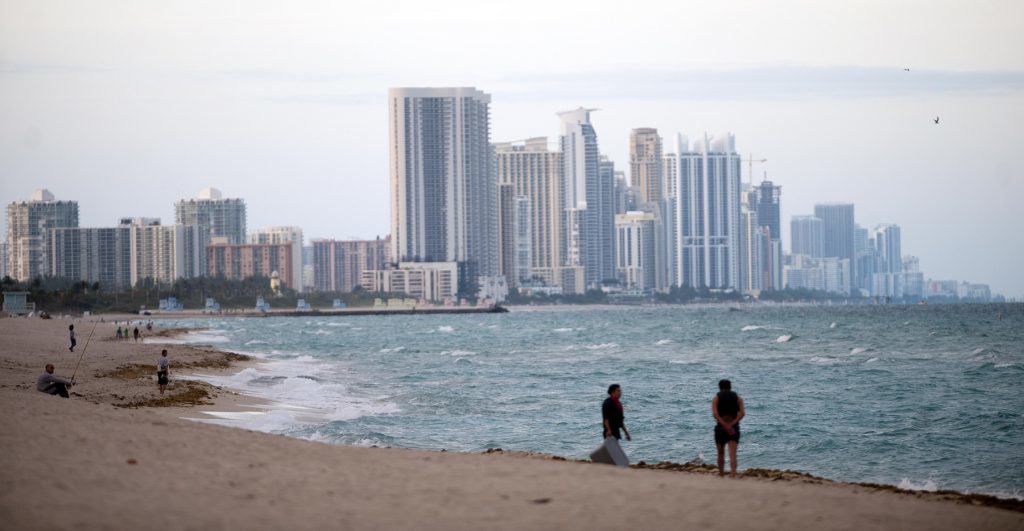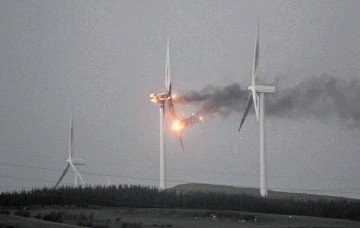
Florida is on high alert for the expected arrival of Hurricane Irma, which continues to tear a deadly path trough the Caribbean, leaving devastation in its wake.
The storm destroyed nearly all buildings on the island of Barbuda on Wednesday, killing a two-year-old child as a family tried to escape, before wreaking havoc on the French territories of St Martin and St Barts, leaving at least seven dead.
Foreign Secretary Boris Johnson said the UK is “taking swift action to respond” to the disaster after speaking to the chief minister of Anguilla, a British overseas territory that was among the first islands to be hit.
Britons in the region have been urged to follow evacuation orders, while states of emergency have been declared in Puerto Rico, Cuba and Florida – amid fears Miami could be struck directly by the hurricane.
Sir Richard Branson, who refused to leave his private retreat in the British Virgin Islands, was counting the cost of widespread damage after the category five hurricane pounded the archipelago.
Meanwhile, two separate hurricanes are adding to the region’s stormy conditions. Hurricane Katia is drifting in the south-western gulf of Mexico, while Jose “continues intensifying” over the central Atlantic as it follows in Irma’s wake.
A massive operation is under way to evacuate people away from coastal areas on Haiti and the Dominican Republic, where aid workers are moving residents into temporary shelters before Irma hits.
On Thursday morning Irma’s eye was just north of the coast of Puerto Rico, lashing the island with heavy rain and high winds and leaving more than 900,000 people without power.
It came less close to the capital San Juan than expected, with its last location about 140 miles north-west of the city.
Irma is moving at around 16mph on a course forecast to take it toward the Bahamas and the British overseas territory of the Turks and Caicos Islands.
An alert sent by the Department of Disaster Management and Emergencies on Grand Turk urged residents near the coasts to take shelter on higher ground, warning the storm surge could raise water levels by 15 to 20 feet above the normal tide.
Some US government personnel have been ordered to leave the Bahamas before the hurricane’s arrival, expected on Friday.
On the US mainland authorities fear the hurricane may slam into the Florida peninsula over the weekend, just days after storm Harvey devastated Texas.
With 1,350 miles of coastline, the most in the continental United States, Florida has roughly 2.5 million homes in hazard zones, more than three times that of any other state, according to Federal Emergency Management Agency data.
The latest forecasts suggest Irma’s most destructive winds could carve up much of Florida’s priciest real estate, damaging properties from the Florida Keys through to Jacksonville as it swirls north.
Officials are making preparations to potentially shut down two nuclear power stations in the Sunshine State, while evacuation orders have been given in the Florida Keys.
Donald Trump, whose Mar-a-Lago resort in Palm Beach could be affected by the storm, said his administration is monitoring Irma closely.
“It looks like it could be something that could be not good, believe me not good,” the US president said.
With sustained winds of 185mph, the category five hurricane is the most powerful Atlantic Ocean hurricane on record.
It is only the second time anywhere in the world a storm has been recorded maintaining such windspeeds for more than 24 hours, after typhoon Haiyan in 2013, according to an expert at the University of Colorado.
A British naval ship has been deployed to help deal with the aftermath with 40 Royal Marines on board, as well as army engineers and equipment, as authorities struggle to bring aid to smaller islands.
Antigua and Barbuda prime minister Gaston Browne told the Associated Press that nearly every building on Barbuda was damaged when the hurricane passed overhead, leaving around 60% of the island’s approximately 1,400 people homeless.
Barbuda had been left “barely habitable”, he said.
French president Emmanuel Macron said he expects that victims and heavy damage will be discovered on the islands of Saint Martin and Saint Barthelemy, known as St Barts.
Briton Alex Woolfall hid in a concrete stairwell as the hurricane hit while he was on holiday in St Maarten, the Dutch area of the island.
He tweeted: “My god this noise! It’s like standing behind a jet engine! Constant booms & bangs. At least concrete stairwell not moving.”
Anguilla’s tourist board said its major resorts had survived the storm, although many private homes had been damaged. There were no reports of any deaths.
Mr Johnson said in a statement: “I’ve just spoken to the chief minister of Anguilla to discuss the devastating impact of Hurricane Irma. My thoughts are with all those affected and the UK is taking swift action to respond.
“We have staff and a British naval ship ready to help those in need. Brits should follow our travel advice which will be regularly updated.”
Before the hurricane’s arrival Sir Richard refused to leave his Necker Island retreat and said he would be seeking shelter in the wine cellar with his staff.
His son, Sam, later wrote on Instagram: “Glad to say that all humans on Necker are ok although a lot of buildings destroyed. Very concerned for our friends and everyone on the neighbouring islands and people in its path. Please don’t take this hurricane lightly if it is heading your way.”
Christian Aid is helping to orchestrate the mass evacuation of Haiti and the Dominican Republic.
The charity’s country manager, Prospery Raymond, said: “People are being moved to schools and churches for safety but in some areas, especially in the north-west of Haiti, these buildings will not withstand the force of the storm.”
Recommended for you
